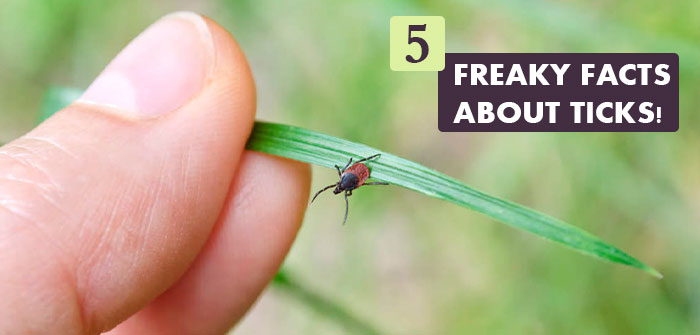5 Freaky Facts about Ticks!
Ticks are pesky little creatures. They appear very small, but can easily harm your pet. Usually they’re visible to human eyes, but they can go unnoticed if regular grooming is not done. One of the most common issues among pets is getting infested by ticks. Nowadays many treatments are available for repelling and killing ticks on pet, but it can still attack an animal by hiding in plants or shrubs. Ticks can transmit many infections and diseases to animals and humans, which sometimes can be life-threatening too. If any tick is spotted, it can be easily removed by plucking it straight out with the help of tweezers.
We always associate the term ticks with dogs or cats. What we don’t know is that ticks are equally harmful to humans. Here are some unusual facts about ticks that you need to know!
- They Feed On Blood
Well, this might have made you think about vampires. Ticks are not completely different from vampires as even ticks like to suck the blood of its host. Their life depends on blood, and if they’re not able to find a new host to feed on, they’ll die. It’s very difficult to get rid of these wicked creatures, so one should always stay away from their habitat. Ticks are mainly present in a yard, shrubs, or any wooded area.
- Life Cycle Of Ticks
The life cycle of ticks is classified into four stages.
- Egg
- Six Legged Larvae
- Eight-Legged Nymph
- Adult
Female ticks lay an average of 4000 eggs on ground. After the eggs are hatched, the ticks need to feed on blood at each stage of their life to survive. Ticks feed on mammals, amphibians, reptiles and sometimes humans. Some species of ticks will only feed on one host throughout their lifespan, and the others need to feed on different hosts at every stage of their life.
- Questing
Ticks are devilish. It will wait for its prey by sitting on grass, shrubs, or a fence. And the moment any animal walks by, it’ll climb right on top of them and attach itself to the host. This process is termed as questing. Ticks cannot jump or fly; they can only crawl. They have very sharp sensory organs so they can even remember animals’ breath. Some species can even remember the shadows of animals!
- Lyme Disease
There are some species of ticks that spreads Lyme disease, which is quite serious as it attacks the joints and nervous system of an animal. It is caused by bacteria called spirochete belonging to Borrelia burgdorferi species. Lyme disease is not very uncommon these days and the people with pets surely know about it. The signs of illness are visible after 3-4 months of infection. The main symptoms of Lyme disease are rigid walking, swollen lymph nodes, fever, lethargy, and loss of appetite. It’s difficult to treat Lyme disease, but with proper treatment, the animal does get better.
- Soft Ticks And Hard Ticks
You can easily differentiate between soft and hard ticks from their physical appearance. There is a plate on the back of hard ticks called Scutum which is not present in soft ticks. Soft ticks are easier to crush in comparison to hard ticks. The mouthparts of hard ticks are easily visible when the tick is examined from above. On the other hand, it may look like soft ticks don’t have mouthparts at a first glance as they’re located under their body.
The main purpose of tick is to suck blood from its host and in that process the tick also transfer small amount of their saliva, organisms, and sometimes dangerous diseases to its host. Ticks can be removed manually, or if you’re not able to pick it, a vet can help you.
Moreover, there are many products available for preventing tick infestations. It’s not that difficult to find a treatment for ticks, but it’s better to not get infested in the first place. With proper treatment, you will never have to worry about your furry companion!


